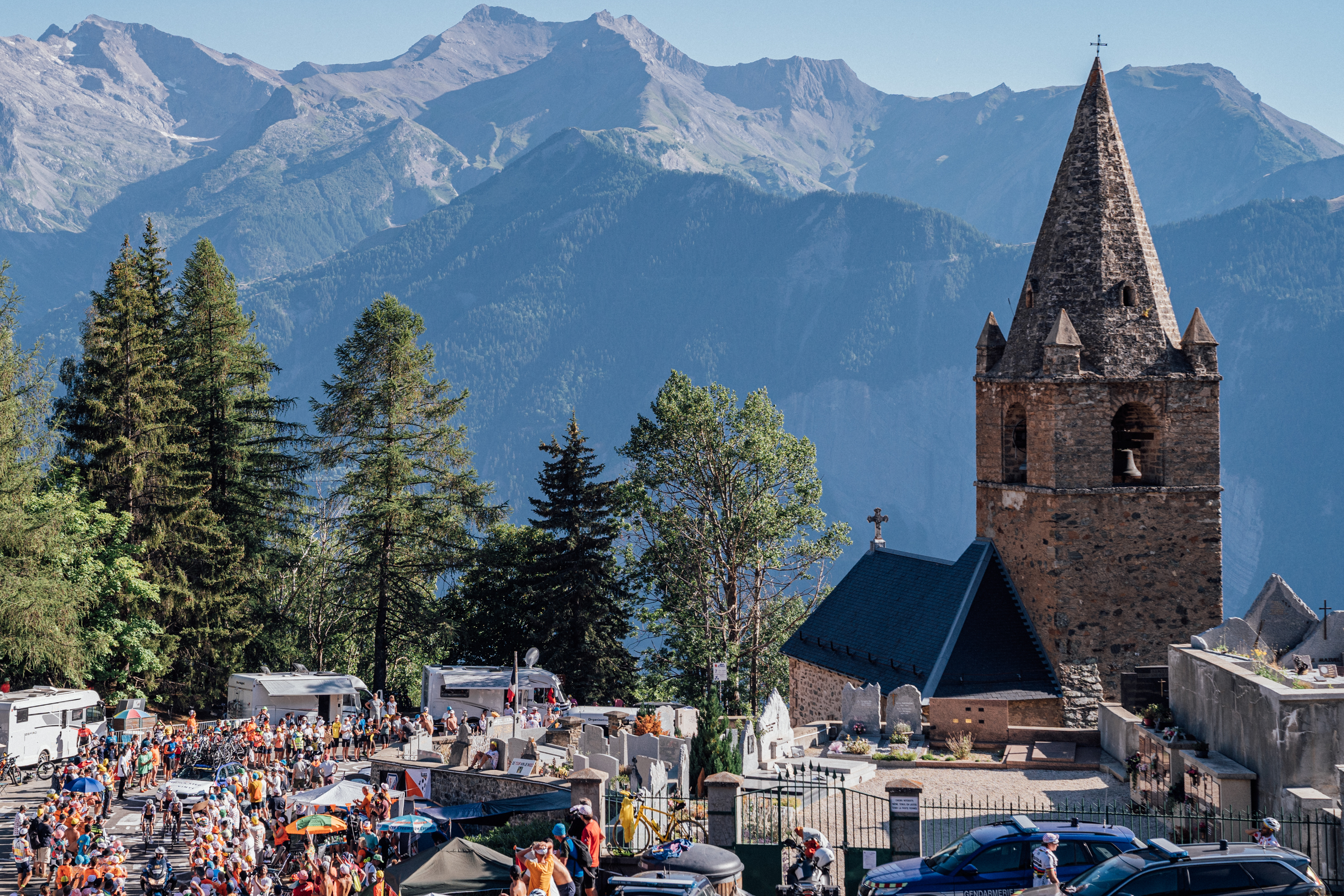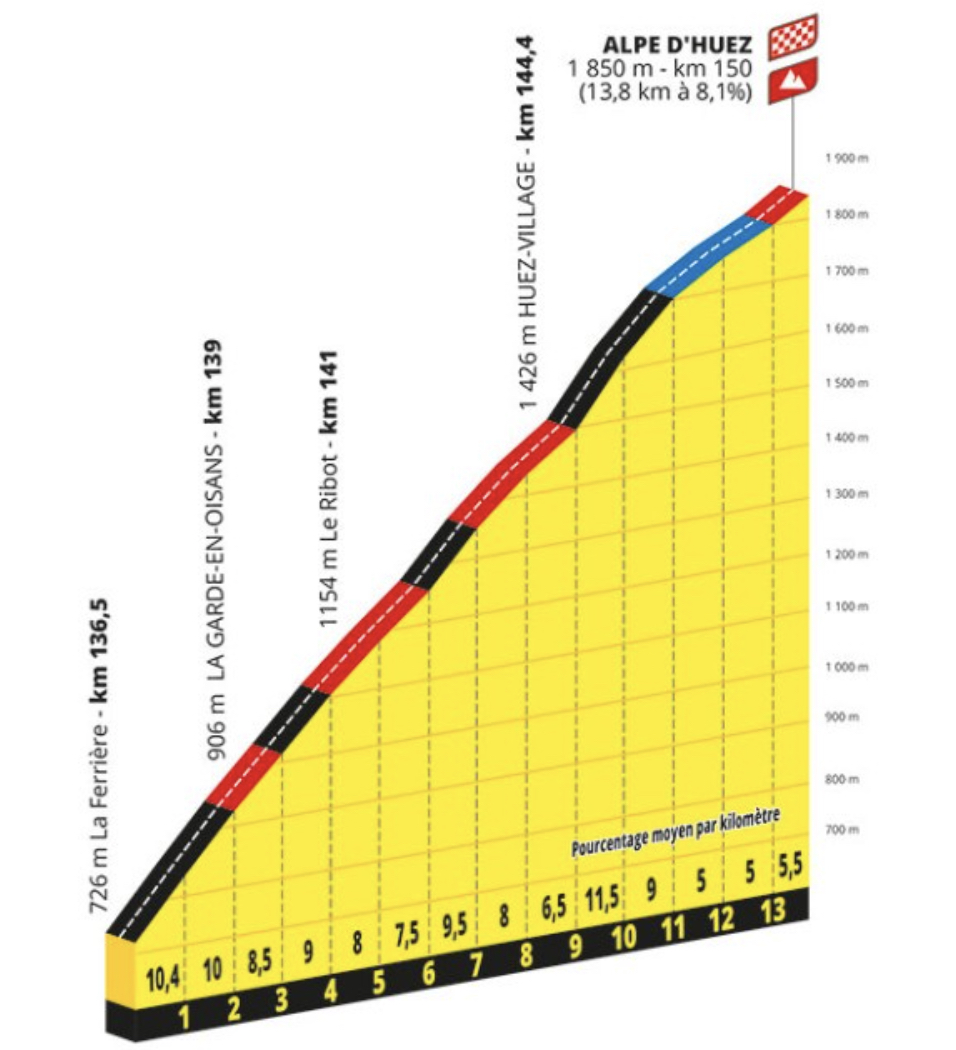Alpe d'Huez – The twists and turns of the 21-bend finale of the 2024 Tour de France Femmes
Taking a closer look at the iconic summit finish where the final battle for yellow will unfold

Even when you strip away all the fanfare and crowds of race day, the road up Alpe d’Huez still echoes with tales of some of the most memorable battles in cycling history, and on Sunday, August 18, 2024, the Tour de France Femmes will deliver another fresh chapter.
The 21 famous bends where so many thrilling battles of the men’s Tour de France have taken place are dotted with signposts counting down to the top. They provide more than a marker of the ever-increasing altitude, simultaneously paying homage to the winners of the stages that played out on the slopes of the 13.8km Alpine climb in the past.
After the climb became the first summit finish of the Tour de France in 1952 the names that have earned themselves a place on those bend markers include Fausto Coppi, Bernard Hinault, Marco Pantani, Thibaut Pinot, Geraint Thomas and, most recently, Tom Pidcock. The question now is who will be the first rider from the Tour de France Femmes to be added to that list.
The inclusion of the Alpe d’Huez certainly adds another layer to the building of the mystique surrounding the latest incarnation of the women’s race, the Tour de France Femmes. It comes after the TdFF included the unrelenting Col du Tourmalet in 2023 – where Demi Vollering rode away to claim the dramatic queen stage and the yellow jersey – and the combined challenge of gravel and gradient on the La Super Planche des Belles Filles in 2022, won by the now retired Annemiek van Vleuten.
Still, it is not the first time the Alpe d'Huez has featured in the women's race for yellow. Over the decades, the climb that winds its way up from Bourg d’Oisans was included in different incarnations of the women’s event, from the official Women’s Tour de France, which ran through from 1984 to 1989 to the Tour Cycliste Féminin and the Grande Boucle Féminine Internationale, which last ran in 2009.
The details of those battles of old on the fabled mountain may not have drawn intense worldwide attention, though. But with the spotlight the Tour de France Femmes has turned on the sport, that will surely change in 2024.
The location

In the first edition of the Tour de France Femmes in 2022, the race ventured to the Vosges for its key climbing stages, then it was into the Pyrenees and up the Col du Tourmalet in 2023. The 2024 Tour de France Femmes route will take the race to the Alps for the first time, but the route to get there is somewhat unusual.
The 946km eight-stage and seven-day race from August 12-18 will work its way south from a Rotterdam start, first through Belgium before reaching France on stage 5 andthen heading toward back-to-back summit finishes for the final two stages.
Get The Leadout Newsletter
The latest race content, interviews, features, reviews and expert buying guides, direct to your inbox!
The first mountain day comes on stage 7, which is a 167km stage with 3,100m of climbing that ends on top of Le Grand-Bornand. Then the final finish line of the race comes on stage 8 atop Alpe d'Huez.
The climb


The Alpe d'Huez, when viewed in isolation, may not be one of the most formidable climbs in the race history. After all, it doesn't have the gravel sections or steep pitches of up to 20% of La Super Planche des Belles Filles and falls short of the 17km length of the Col du Tourmalet. However, there's always been so much more to the ascent than just 13.8km at an average gradient of 8.1%.
The history of the climb is heightened by the dramatic series of hairpins, raucous crowds and, importantly, the drama and ascents that have already unfolded earlier in the stage.
Before stage 8 finishes on the 21 hairpin bends, the 150km route with 3,900m of altitude gain will drop down from Le Grand-Bornand to traverse the Col de Tamié (9.5km at 4%) before the 30km mark has even been hit.
Then, there is a relatively flat stretch for more than 40 kilometres before the race reaches the Col du Glandon (19.7km at 7.2%) and the highest point of the day at 1,924m near the 100km mark of the stage. After rolling through Bourg d'Oisans, nestled in the valley, it is then onto the crowning climb, where the yellow jersey of the Tour de France Femmes will settle on the shoulders of the third winner of the race.
First, though, there are 21 hairpin bends to contend with. Though the cyclo-tourists may enjoy the numbered signs with the cute picture of marmots and homage to past winners, on race day they'll be lost in the crowds and all-encompassing effort the lead contenders will put into delivering the best finish possible in the world's biggest bike race.
It's no easy beginning, with the first two kilometres delivering gradients over 10% through the first five bends. There is a mild easing as the climb crosses the village of Le Garde with the gradient hovering from 9% to 7.5% through to the point where there is just over 5km remaining.
A brief reprieve at the village with a kilometre at 6.5% soon gives way to one of the toughest sections of the climb at 11.5%. The final three kilometres, in terms of gradient, are the easiest of the climb, with gradients of around 5%. But for many, they are likely to be the hardest of the 946km event, given the accumulated fatigue and how much will still be at stake in the race overall.
The stakes

Everything is up for grabs on Alpe d'Huez as it marks the final climb on the final stage of the 2024 Tour de France Femmes. Gaps have already been built through the dramatic French stages but so much climbing is packed into the last 150km of racing on Sunday, August 18, there will be no chance for anyone to rest on their laurels until they cross the finish line on the open expanses of the summit of Alpe d'Huez.
Not only is the stage itself brutal, but with a week of racing already in the legs plus the Paris Olympic Games just before, there is no telling what havoc the accumulated fatigue could wreak. It will be a true test of stamina and climbing prowess.
Kasia Niewiadoma (Canyon-SRAM), who was the runner-up on the Tourmalet in 2023, wears yellow ahead of stage 8, with a gap of 27 seconds to nearest rival Puck Pieterse (Fenix-Deceuninck), though it's the climbing specialists that are sitting over a minute back that are being focussed on as among the greatest threats to that overall lead. As the race leader herself said in the run into the brutally tough stage "the whole GC could be turned upside down".
2023 Tour de France Femmes victor Demi Vollering, at 1:15 down, is of course prominent in the discussion, especially as she is supported by a powerful SD Worx-Protime squad. However, plenty of other riders will be lining up with dreams of claiming the prestige of a high overall finish or that first Tour de France Femmes Alpe d'Huez win.
They range from Lidl-Trek's Gaia Realini and Shirin van Anrooij to Mavi García (Liv-AlUla-Jayco), Mareille Meijering (Movistar) and Sarah Gigante (AG Insurance-Soudal), while some other talented climber such as Neve Bradbury (Canyon-SRAM) and Niamh Fisher-Black) will instead be likely to be burying themselves to help their team leaders in the yellow chase. On the home front, the French climbers Juliette Labous (DSM-firmenich PostNL) and future teammate Évita Muzic (FDJ-SUEZ) are bound to have the loudest wave of cheers during their journey up the mountain.
Muzic, in fact, has one of the strongest claims when it comes to the iconic finishing climb given her performance on La Laguna Negra at La Vuelta Femenina. She was the only rider who could stick to the wheel of an accelerating Vollering and then came around the Dutch rider on the last 50 metres to claim the stage win. Also in her favour is that she no doubt knows the climb like the back of her hand given its proximity to home.
"I was dreaming for Alpe d'Huez on the Tour de France," said the FDJ Suez rider who finished eighth overall in 2022. "Now I live 40 minutes from Alpe d'Huez, so even more for me, it's really special to ride there."
"And yeah, for sure, in my dream, I want to win on the top of Alpe d'Huez but we'll see also [about] the legs."
It's a climb where the "legs will really talk" but the volume will shoot to yet another level altogether for whoever wins, as it will be their name that is shouted across the history books.

Simone is a degree-qualified journalist that has accumulated decades of wide-ranging experience while working across a variety of leading media organisations. She joined Cyclingnews as a Production Editor at the start of the 2021 season and has now moved into the role of Australia Editor. Previously she worked as a freelance writer, Australian Editor at Ella CyclingTips and as a correspondent for Reuters and Bloomberg. Cycling was initially purely a leisure pursuit for Simone, who started out as a business journalist, but in 2015 her career focus also shifted to the sport.